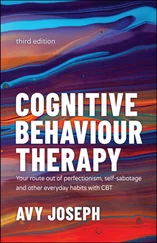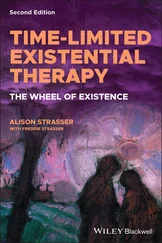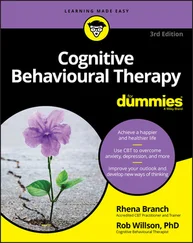Identifiers: LCCN 2019058760 (print) | LCCN 2019058761 (ebook) | ISBN 9780470972434 (paperback) | ISBN 9781119695165 (adobe pdf) | ISBN 9781119695134 (epub)
Subjects: LCSH: Cognitive therapy.
Classification: LCC RC489.C63 R955 2020 (print) | LCC RC489.C63 (ebook) | DDC 616.89/1425–dc23
LC record available at https://lccn.loc.gov/2019058760LC ebook record available at https://lccn.loc.gov/2019058761
Cover Design: Wiley
Cover Image: © Jose A. Bernat Bacete/Getty Images
| 2.1a |
Key formative RR for Bobby. |
| 2.1b |
Key RRP enactments. |
| 2.2 |
Rating sheet for target problem procedure 1 for Bobby. |
| 3.1a |
CAT‐based sketch of normal development of the Self through healthy early infant‐caregiver interactions (RRs) shown here in a ‘nuclear’ family type setting and in a particular sociocultural context. |
| 3.1b |
Their subsequent internalisation as formative RRs within the growing child (by permission Bevan Fidler). |
| 4.1 |
CAT‐based diagrammatic sketch of damaging and abnormal development of the Self. |
| 6.1 |
Part diagrams: sequences illustrating traps, dilemmas, and snags. |
| 6.2 |
Types of cores in sequential diagrams. |
| 6.3 |
(a–c) Beatrice—Self states sequential diagram. (a) Initial depiction of formative reciprocal roles. (b) Mapping of key reciprocal role procedures leading to a similar state of “deep sadness.” One of these involves enactment of a situational RR of ideally loved to ideally loving (c) mapping the outcome of key reciprocal role procedures which reinforce original formative RRs and depicting also two Self states (SS 1 and SS 2) and highlighting a key dialogic voice using an asterisk. |
| 6.4 |
(a) Depicts formative reciprocal roles; (b) mapping of most common coping procedure (effectively a “trap”); (c) further mapping of a “dilemma” leading to a briefly enacted RRP (effectively a “snag”) undermined by a critical voice; (d) depicting possible further RRP enactments (from the parental/culturally‐derived pole of his formative RR) toward Self and/or others. |
| 7.1 |
Self states sequential diagram for Rita showing reciprocal roles. B, D, and F represent childhood‐derived roles which, when activated by experiences, perceptions, or memories of A, C, or E, lead to flashpoint X followed by either rage or the dissociated alternative coping zombie state. The consequences of these would be typically “rejection” and having “needs unmet” which in turn would reinforce underlying formative RRs. |
| 8.1 |
Sequential diagram for Grace. |
| 9.1 |
Simplified SDR/map for Susan showing key formative RR and key RRPs. |
| 9.2 |
SDR or “map” for Tamara. |
| 9.3 |
SDR/map for Alan. |
| 9.4 |
(a) Key formative RRs for Sarah. (b) SDR/map for Sarah. |
| 9.5 |
The client in the sessions. |
| 9.6 |
The therapist in the sessions. |
| 9.7 |
A problematic sequence (RRP) of thoughts, emotions, and behaviors (a “trap”). |
| 10.1 |
(a–d) Stages in construction of a stereotypical BPD‐type diagram. (c) illustrates likely dissociated Self states and (d) introduces a description of typical staff reactions around such patients and illustrates a rudimentary “contextual reformulation” (see Chapter 11). |
| 10.2a |
Deborah—grid of self‐descriptions. |
| 10.2b |
Deborah—grid of self–other relationships. |
| 10.3 |
Narcissistic personality disorder: the two common Self states. |
| 10.4 |
(a–c) Stages in constructing a stereotypic NPD‐type diagram showing (a) underlying (formative) RRs, (b) typical initial coping RRPs and typical Self states, and (c) potential Self states, defensive RRPs and (situational) RR enactments, including potentially with staff and others. |
| 10.5 |
Olivia—sequential diagram (revised and simplified). |
| 10.6 |
Sam—final Self state sequential diagram (revised and simplified). |
| 11.1a |
Schematic patient SDR or map showing (formative) RRs and consequent RRPs. |
| 11.1b |
Schematic rudimentary contextual reformulation showing patient SDR or map and outline possible therapist and staff team (situational) RR enactments toward patient RRPs. Some of these staff RR enactments may be derived in part from their own formative RRs. |
| 11.1c |
Schematic extended contextual reformulation showing added layers (like “onion skins”) of interactions arising from possible service context and broader social and political context. |
| 11.2a |
Initial description of patient’s formative RRs. |
| 11.2b |
Simple contextual reformulation showing patient RRPs and staff team reciprocal (situational) RR enactments and the split between these. Some of these enactments may have partial origins in formative RRs of staff. |
| 11.3a |
Initial SDR or map for Paula showing her formative RRs. |
| 11.3b |
Initial SDR or map showing subsequent RRPs and consequences. |
| 11.3c |
Initial SDR or map showing additional tendencies to dissociate or “fragment” into at least two Self states (broken ellipses). |
| 11.3d |
Contextual reformulation showing (situational) reciprocal role interactions between staff and patient with subsequent splits within staff team. Some of these situational enactments may have partial origins in staff formative RRs. |
Anthony Rylequalified in medicine in 1949 and worked successively as a founding member of an inner city group practice, in Kentish Town, London, as Director of Sussex University Health Service and as a Consultant Psychotherapist at St. Thomas's Hospital, London. After retiring from the NHS he worked part‐time in teaching and research at Guy's Hospital. While in general practice he carried out epidemiological studies of the patients under his care and the experience of demonstrating the high prevalence and family associations of psychological distress influenced his subsequent interest in the development of forms of psychological treatment which could realistically be provided in the NHS. Studies of the process and outcome of psychotherapy followed, and from these grew the elaboration of an integrated psychotherapy theory and the development of the time‐limited model of treatment which became cognitive analytic therapy. He died in September 2016.
Ian B. Kerrgraduated in medicine from the University of Edinburgh. After several junior hospital posts he worked for many years in cancer research. He subsequently completed dual training in psychiatry and psychotherapy at Guy's, Maudsley, St. George's, and Henderson Hospitals in London, and with the British Association of Psychotherapists. He worked for several years as Consultant Psychiatrist and Psychotherapist and Honorary Senior Lecturer in Sheffield, UK, and then in NHS Lanarkshire, Scotland, UK. He has been involved in teaching and researching CAT in many settings in the UK and internationally.
Preface to the Second Edition
This revised edition is being offered given an evident need to update, expand, and clarify aspects of the first edition which appeared now almost two decades ago, and given a keen wish by Tony Ryle to do this. Our aim was to offer a summary but comprehensive overview of the current evolved Cognitive Analytic Therapy (CAT) model, its background and comparative context, and of its range of applications, that would be informative and helpful to those new to the model, to trainees and even established practitioners. Very sadly however, as many readers will be aware, not long after being commissioned to do this Tony, who was the senior author and progenitor of the cognitive analytic therapy model, developed a serious illness from which he ultimately succumbed in 2016. Summaries of his remarkable creative personality, his career and contributions to the field of psychotherapy and mental health more broadly have been published in various obituaries which are available on the internet and in a special issue published in 2018 of Reformulation the newsmagazine of the Association for Cognitive Analytic Therapy (ACAT) in the UK, also available on‐line.
Читать дальше












